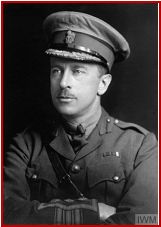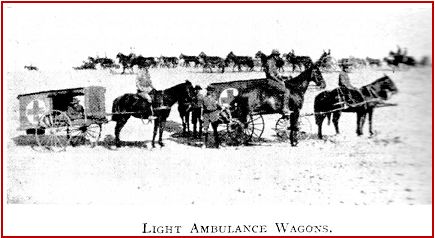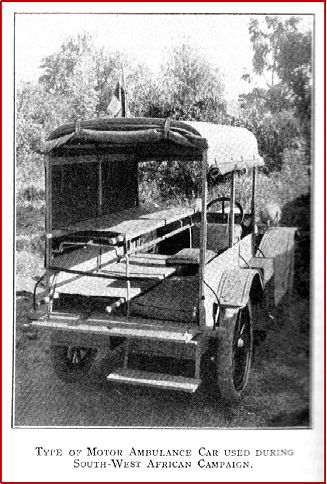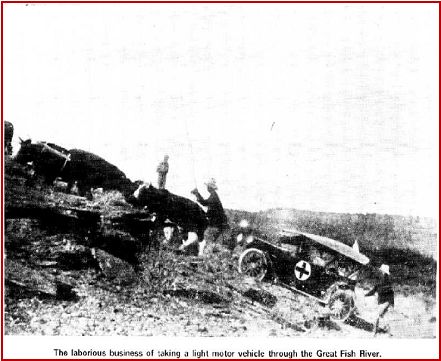


Newsletter No. 494
April 2017
After the customary announcements two short videos were shown, rounding off the series on the Battle for Iwo Jima.
The Branch Vice Chairman, Lt. Col. (Dr.) Graeme Fuller, was called to present his DDH talk on "The South African Medical Corps in World War 1: 1914 to 1915".
Events leading up to the First World War were described. The SAMC was established in December 1913, less than a year before it was required to mobilise for the invasion of South West Africa. Regulations and a proposed structure of 14 different units for the new Corps had been published. The existing Colonial units were to be incorporated. 164 Royal Army Medical Corps personnel responsible for British troops still in SA had been expected to assist with training of the new SAMC but they were almost all withdrawn after the War started, leaving behind only Lt Cols Sexton and Buist and 6 others. Lt Col Sexton was soon transferred to Europe.
Major Philip Graham Stock, formerly of the RAMC and more recently attached to the Transvaal Medical Staff Corps (Volunteers) was appointed the first Staff Officer for Medical Services of the SAMC. This was a fortunate appointment and he rapidly built and expanded an effective service. He was then promoted to Lt Colonel and appointed Director of Medical Services (DMS)

When the war began Lt Col GH Knapp, previously Surgeon to the Cape Mounted Rifles, was tasked with training but he was later mobilised with the SWA Forces. Colonel Buist (RAMC) initially took charge of Cape Town medical facilities as Assistant DMS for the Cape. Major A. Wright, ex-RAMC, later took over from Colonel Buist. Lt Col GH Usmar, formerly RAMC, took over the Training Depot at Wynberg from Lt Col Knapp.
Senior Reservists of the former Cape, Natal and Transvaal Medical Corps were appointed as ADMSs for the other regions and for the components of the invading forces. On 26th September 1914 a small contingent of SA troops under Lt Col Grant suffered a humiliating defeat at Sandfontein. Attached SAMC personnel under Captains Dalton and Holcroft performed well but were captured and spent the next few months as POWs in GSWA.
Further progress of this campaign was interrupted by a Rebellion in the Northern Cape, led by the former Boer General Kemp and Lt Col Maritz, who resigned from the SADF and joined the enemy. Major JR McGregor, Senior MO of Maritz's Force B, managed to escape before being handed over to the enemy for refusing to join the Rebellion. Once this had been controlled, with significant losses, the SWA Campaign was resumed in 1915.
The originally proposed establishment of the SAMC was expanded to 26 units in the field, well supported by the newly formed SA Military Nursing Service under Chief Matron Mrs. E R Creagh. Two military base hospitals were established in Cape Town (at Wynberg Camp and in Maitland). General Hospitals were also opened at Swakopmund, under 2nd (Durban) Field Ambulance, commanded by Major R Milner-Smyth and at Lüderitzbucht by 1st Field Ambulance (Johannesburg) under Major J Pratt-Johnson. Smaller temporary field hospitals were also formed as needed along the lines of advance.
Motorised and animal drawn ambulances were provided. A Hospital Train was also used once the railway lines had been repaired and extended. A specially modified Hospital Ship, HMHS Ebani, made 22 trips between Walvis Bay/Swakopmund, Lüderitzbucht and Cape Town to evacuate 4552 sick and wounded.



Mounted Brigade FAs accompanied the mobile forces. Their chief difficulty was lack of water, due to desert conditions and poisoning of existing water sources by the retreating Germans. Poor infrastructure with few roads or bridges made re-supply and evacuation of sick and wounded very difficult. Motor vehicles often had to be abandoned and draft animals suffered and died in their thousands. Relatively little disease and few severe wounds or deaths in action occurred. Lessons learned by Medical units included careful selection of troops before mobilisation, the importance of sanitation and personal hygiene, the great benefits of typhoid inoculation and the need for better communication with front line units and HQs. They also learned how to survive and be effective in harsh conditions, which would benefit them in the European and East African campaigns to come.
Reference was made to more detailed Unit Histories with photographs of 1st Mounted Brigade Field Ambulance (former A Company, Cape Medical Corps, with HQ in King William's Town), 2nd MBFA (former Pietermaritzburg Company) and 2nd FA (Durban Company, Natal Medical Corps). Individual tributes were paid to Lt Col HA Moffatt, a Cape Town surgeon who served in the ABW and in both World Wars and Capt. (later Lt Col) CM Murray, whose accounts of his service have been published, together with Capt. HFB Walker, author of "A Doctor's Diary in Damaraland".
The generous patriotic support provided by the (civilian) Medical Profession in this and the subsequent campaigns was mentioned, as were the inputs by Nursing Staff, Transport personnel, Labourers, Naval Staff, Chaplains and charitable fund raising efforts at home and abroad.
Lists of Honours and Awards for the SWA Campaign and the initial name list of Volunteers to accompany the South African Brigade to Europe were shown. Colonel Stock was in overall command of the contingent and of 1 SA General Hospital, which left for England on 25 September 1915, followed by 1st SA Field Ambulance under the command of Lt Col GH Usmar, leaving on 10 October. Finally, the principal sources of information for this talk were listed and acknowledged.
A lively question and answer session the chairman declared a rest break. After the break the monthly raffle was drawn and we moved on to the main talk presented by Dr Arnold van Dyk entitled "Deelfontein".
Unfortunately Dr. Van Dyk was not able to forward his very interesting lecture on the Yeomanry Hospital at Deelfontein in the Greater Karoo before he left on a trip into Botswana but when he returns he will forward it and rest assured, it will be sent on to you all.
The meeting closed with the Chairman, Roy Bowman, giving the meeting's Vote of Thanks to both speakers for, once again, exceptionally well researched and presented talks and the presentation of the customary gift to our guest speaker.
The meeting closed after the announcements of the content of April's meeting and the reminder that the meeting on the 13th April is also the AGM.
The Chairman wished all attendees a safe journey home after which he closed the meeting.
Roy Bowman
CHAIRMAN
SOUTH AFRICAN MILITARY HISTORY SOCIETY
KZN BRANCH
South African Military History Society / scribe@samilitaryhistory.org